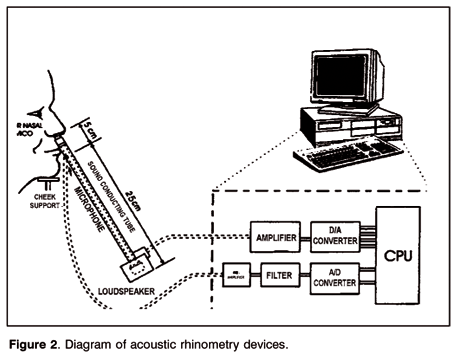Nasal obstruction when lying down frequently brings patients to the otolaryngologic clinic. There are several explanations for the problem. The nasal mucosa reaction to venous changes that alter local blood flow, secondary to compression of the neck veins or hydrostatic pressures, is the most accepted explanation. Acoustic rhinometry is a new non-invasive technique to assess nasal patency. AIM: The purpose of this study was to assess the effect of posture change from sitting to supine position applying acoustic rhinometry. STUDY DESIGN: clinical prospective. MATERIAL AND METHOD: 10 volunteers with no nasal disorders, aged 19 to 30 years old, and 10 volunteers with symptoms of rhinitis, aged 18 to 27 years old, were selected for the study. Nasal sensation was tested by means of a visual analogue scale. Nasal area and volume were assessed by acoustic rhinometry in the following positions: seated and 15 minutes after lying down. RESULTS: Both groups showed significant nasal obstruction on the visual analogue scale and on acoustic rhinometry. The perception of nasal obstruction was significantly higher in subjects with rhinitis symptoms compared to normal. Conclusion: We conclude that the effect of posture change from sitting to supine position produces a decrease in nasal cross-sectional area and volume in both normal and in subjects with symptoms of rhinitis. However, the impact on the perception of nasal obstruction induced by lying down seems to be higher in subjects with symptoms of rhinitis.
posture; acoustic rhinometry; nasal patency; nasal obstruction









